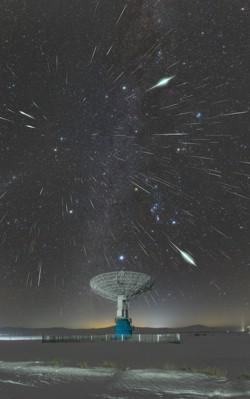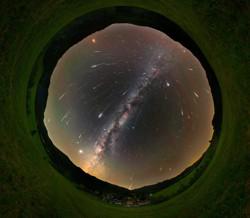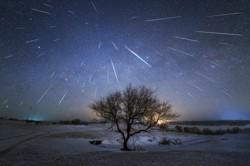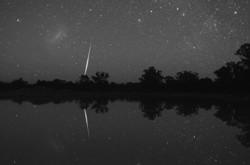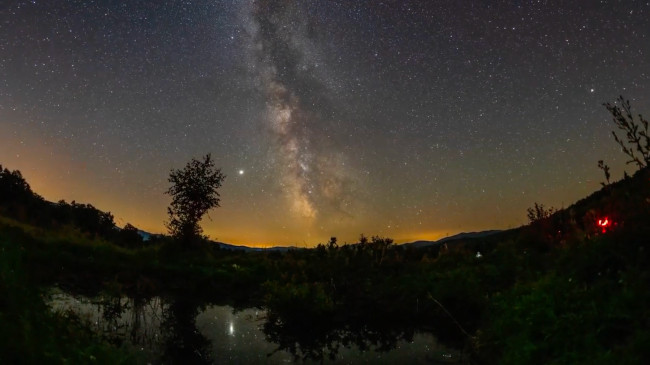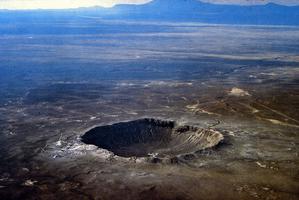Glossary term: 流星
Description: 流星(或流星)是小行星或彗星的碎片,或者是太空碎片,进入地球或其他天体的大气层后,由于与大气层摩擦产生热量而发亮。这种摩擦产生的热量类似于我们在寒冷时搓手取暖的方式。流星通常非常小,从几毫米到几厘米不等。天文学家称它们为流星。通过流星的方向、观测时间和颜色,我们可以进一步了解流星的起源和构成。
最亮的流星被称为 "火流星",经常可以在天空中看到,有时甚至在白天。有时,观测者甚至会听到流星在大气层中燃烧和飞行时发出的声音。流星还会导致大气电离,对于地球来说,这可以通过雷达观测到。
在地球上,一年四季都能看到流星,但偶尔也会在短时间(例如,一晚上的时间)内出现许多流星。其中许多流星雨每年都会重复出现,并根据流星的起源(或辐射)星座来命名。著名的流星雨包括英仙座流星雨和狮子座流星雨。
Related Terms:
See this term in other languages
Term and definition status: The original definition of this term in English have been approved by a research astronomer and a teacher The translation of this term and its definition is still awaiting approval
The OAE Multilingual Glossary is a project of the IAU Office of Astronomy for Education (OAE) in collaboration with the IAU Office of Astronomy Outreach (OAO). The terms and definitions were chosen, written and reviewed by a collective effort from the OAE, the OAE Centers and Nodes, the OAE National Astronomy Education Coordinators (NAECs) and other volunteers. You can find a full list of credits here. All glossary terms and their definitions are released under a Creative Commons CC BY-4.0 license and should be credited to "IAU OAE".
If you notice a factual or translation error in this glossary term or definition then please get in touch.
Related Media
双子座流星雨,作者 Hao Yin,中国
Credit: Hao Yin/IAU OAE
License: CC-BY-4.0 Creative Commons 署名 4.0 国际 (CC BY 4.0) icons
2020 年英仙座流星雨飞越波洛尼尼暗空公园,作者 Tomáš Slovinský,斯洛伐克
Credit: Tomáš Slovinský/IAU OAE
License: CC-BY-4.0 Creative Commons 署名 4.0 国际 (CC BY 4.0) icons
双子座流星雨(摄于中国),作者:Dai Jianfeng,中国
Credit: Dai Jianfeng/IAU OAE
License: CC-BY-4.0 Creative Commons 署名 4.0 国际 (CC BY 4.0) icons
二重天之间
Credit: 法布里齐奥-梅兰德里/国际天文学联合会教育办公室
License: CC-BY-4.0 Creative Commons 署名 4.0 国际 (CC BY 4.0) icons
流动的夜空
Credit: Robert Barsa/IAU OAE
License: CC-BY-4.0 Creative Commons 署名 4.0 国际 (CC BY 4.0) icons
Related Activities
Meteoroids, Meteors and Meteorites
astroEDU educational activity (links to astroEDU website) Description: Unveiling the mystery of "shooting stars": meteors, meteorites and meteroids
License: CC-BY-4.0 Creative Commons 署名 4.0 国际 (CC BY 4.0) icons
Tags:
Geology
Age Ranges:
6-8
, 8-10
, 10-12
, 12-14
Education Level:
Middle School
, Primary
Areas of Learning:
Interactive Lecture
Costs:
Low Cost
Duration:
1 hour 30 mins
Group Size:
Group
Skills:
Analysing and interpreting data
, Asking questions
, Communicating information
, Engaging in argument from evidence
Impact Craters
astroEDU educational activity (links to astroEDU website) Description: A literal Earth-Shattering experiment
License: CC-BY-4.0 Creative Commons 署名 4.0 国际 (CC BY 4.0) icons
Tags:
History
, Impact
, Experiment
Age Ranges:
10-12
, 12-14
, 14-16
Education Level:
Middle School
, Primary
, Secondary
Areas of Learning:
Guided-discovery learning
, Modelling
, Traditional Science Experiment
Costs:
Low Cost
Duration:
1 hour
Group Size:
Group
Skills:
Analysing and interpreting data
, Asking questions
, Constructing explanations
, Engaging in argument from evidence
, Using mathematics and computational thinking
